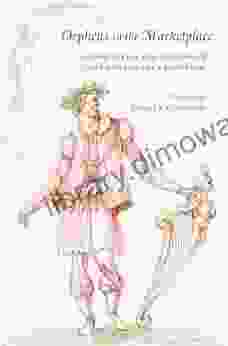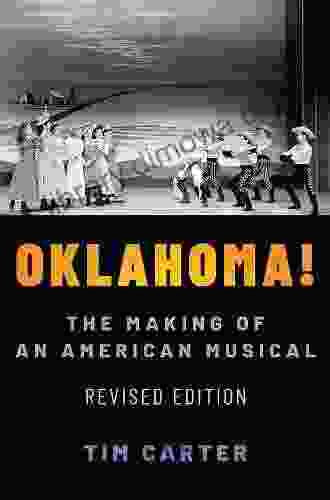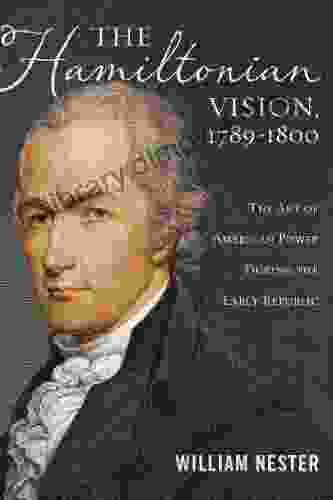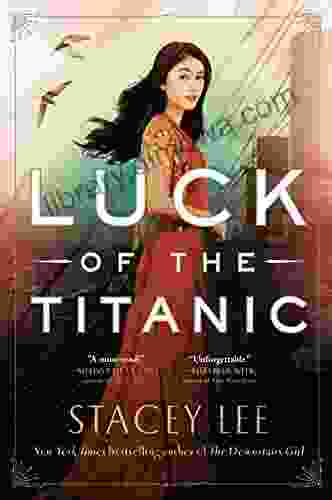The Art of American Power: Unlocking the Secrets of Early Republican Diplomacy

In the tumultuous years following the American Revolution, the fledgling United States found itself navigating a treacherous international landscape. With limited resources and a precarious position amidst global powers, the young nation faced the daunting task of establishing itself as a sovereign entity and safeguarding its interests. It was in this crucible that the art of American power was forged.
The early American diplomats were guided by a set of principles that would shape the nation's foreign policy for generations to come. These principles included:
- Independence and Sovereignty: The United States asserted its independence and sovereignty, refusing to be drawn into the power struggles of European nations.
- Neutralism and Non-Entanglement: The United States sought to avoid entangling alliances and conflicts, focusing on its own domestic development.
- Expansion and Manifest Destiny: The belief that the United States had a God-given right to expand westward and acquire new territories became a driving force in foreign policy.
- Diplomacy and Negotiation: The United States emphasized diplomacy as a tool to resolve conflicts and secure its interests, often engaging in skillful negotiations and compromises.
The art of American power during the early republic was personified by a remarkable cast of characters, each playing a pivotal role in shaping the nation's foreign policy. Among them were:
4.5 out of 5
| Language | : | English |
| File size | : | 850 KB |
| Text-to-Speech | : | Enabled |
| Screen Reader | : | Supported |
| Enhanced typesetting | : | Enabled |
| Word Wise | : | Enabled |
| Print length | : | 209 pages |
- Thomas Jefferson: The third president of the United States was a staunch advocate of neutralism and non-entanglement, believing that the nation should focus on internal development. He is known for his landmark Louisiana Free Download, which doubled the size of the United States.
- John Adams: Jefferson's predecessor as president, Adams played a crucial role in preserving American neutrality during the Napoleonic Wars. He also negotiated the Treaty of Ghent, which ended the War of 1812.
- Alexander Hamilton: The first Secretary of the Treasury, Hamilton was an advocate for a strong central government and a robust foreign policy. He believed in the importance of military preparedness and economic power.
- James Monroe: Monroe, the fifth president of the United States, is remembered for his eponymous Monroe Doctrine, which declared the Americas off-limits to European colonization.
The early American diplomats achieved several notable diplomatic triumphs that cemented the nation's status as a global player. These included:
- Jay's Treaty (1794): Negotiated by John Jay, this treaty averted war with Great Britain, resolved outstanding issues from the Revolutionary War, and secured American access to the Mississippi River.
- Treaty of Ghent (1814): Ending the War of 1812, this treaty restored peace with Great Britain and preserved American territory.
- Louisiana Free Download (1803): Jefferson's acquisition of Louisiana from France doubled the size of the United States and gave the nation control of the Mississippi River and the port of New Orleans.
- Monroe Doctrine (1823): Monroe's declaration that the Americas were no longer open to European colonization protected American interests and asserted the nation's influence in the Western Hemisphere.
The early American diplomats faced significant challenges and obstacles in their pursuit of power. These included:
- European Rivalries: The United States was caught in the crossfire of European conflicts, particularly during the Napoleonic Wars.
- Westward Expansion: Native American resistance and conflicts with neighboring powers hindered the nation's westward expansion.
- Domestic Divisions: Political divisions and differing visions for the nation's future often hampered diplomatic efforts.
The art of American power forged during the early republic had a profound and lasting impact on the nation's foreign policy. The principles of independence, negotiation, and expansion continued to guide American diplomacy throughout its history. The diplomatic triumphs achieved by early American diplomats established the United States as a respected and influential player on the global stage.
The early American diplomats were masters of the art of power, navigating a complex and often hostile international landscape to secure the interests of their young nation. Their principles, strategies, and accomplishments laid the groundwork for centuries of American foreign policy. By understanding the art of American power during the early republic, we gain valuable insights into the enduring principles that have shaped the United States' role in the world.
4.5 out of 5
| Language | : | English |
| File size | : | 850 KB |
| Text-to-Speech | : | Enabled |
| Screen Reader | : | Supported |
| Enhanced typesetting | : | Enabled |
| Word Wise | : | Enabled |
| Print length | : | 209 pages |
Do you want to contribute by writing guest posts on this blog?
Please contact us and send us a resume of previous articles that you have written.
 Book
Book Novel
Novel Page
Page Chapter
Chapter Text
Text Story
Story Genre
Genre Reader
Reader Library
Library Paperback
Paperback E-book
E-book Magazine
Magazine Newspaper
Newspaper Paragraph
Paragraph Sentence
Sentence Bookmark
Bookmark Shelf
Shelf Glossary
Glossary Bibliography
Bibliography Foreword
Foreword Preface
Preface Synopsis
Synopsis Annotation
Annotation Footnote
Footnote Manuscript
Manuscript Scroll
Scroll Codex
Codex Tome
Tome Bestseller
Bestseller Classics
Classics Library card
Library card Narrative
Narrative Biography
Biography Autobiography
Autobiography Memoir
Memoir Reference
Reference Encyclopedia
Encyclopedia Stephanie Black
Stephanie Black Kevin Flanders
Kevin Flanders Peter Bowen
Peter Bowen Kevin Sheehan
Kevin Sheehan Kim Smith
Kim Smith Kimberley Monteyne
Kimberley Monteyne Michael Korda
Michael Korda Stephen Berkley
Stephen Berkley Tom Turpin
Tom Turpin Kim Kircher
Kim Kircher Manousos Markoutsakis
Manousos Markoutsakis Lou Tepper
Lou Tepper David Moskowitz
David Moskowitz Lorrie Fair
Lorrie Fair Megan Stringfellow
Megan Stringfellow Todd Falcone
Todd Falcone Ron Ellis
Ron Ellis Robert Lipsyte
Robert Lipsyte Rollan Wengert
Rollan Wengert Toby Tanser
Toby Tanser
Light bulbAdvertise smarter! Our strategic ad space ensures maximum exposure. Reserve your spot today!

 Vladimir NabokovHow Do B2B Companies Get New Customers? The Ultimate Guide to Customer...
Vladimir NabokovHow Do B2B Companies Get New Customers? The Ultimate Guide to Customer... Kenneth ParkerFollow ·4.1k
Kenneth ParkerFollow ·4.1k Marc FosterFollow ·14.7k
Marc FosterFollow ·14.7k Shaun NelsonFollow ·6k
Shaun NelsonFollow ·6k August HayesFollow ·11.5k
August HayesFollow ·11.5k Brian WestFollow ·5.5k
Brian WestFollow ·5.5k Henry David ThoreauFollow ·11.2k
Henry David ThoreauFollow ·11.2k Rubén DaríoFollow ·10.7k
Rubén DaríoFollow ·10.7k Kirk HayesFollow ·19.2k
Kirk HayesFollow ·19.2k

 Richard Adams
Richard AdamsOrpheus In The Marketplace: A Journey of Inspiration and...
In a world that often...

 Miguel de Cervantes
Miguel de CervantesEscape into the Enchanting World of Rodgers and...
Rediscover the Magic with Oxford...

 Javier Bell
Javier BellAm Invincible In The Martial Arts Library: Dive into a...
Unleash the Power Within Embark on an...

 Eli Blair
Eli BlairThe Making of an American Musical: Broadway Legacies,...
This revised and...

 Jacob Hayes
Jacob HayesExplore The Beauty Of Hungary: A Visual Journey Through a...
Hungary is a land of...
4.5 out of 5
| Language | : | English |
| File size | : | 850 KB |
| Text-to-Speech | : | Enabled |
| Screen Reader | : | Supported |
| Enhanced typesetting | : | Enabled |
| Word Wise | : | Enabled |
| Print length | : | 209 pages |












